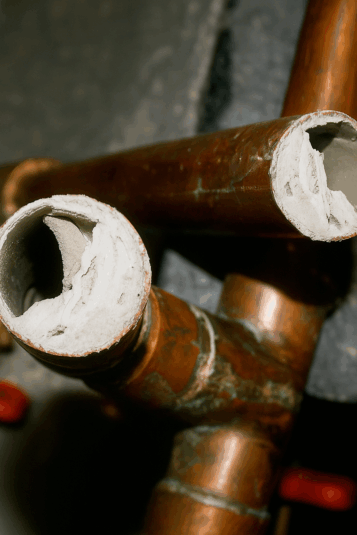What is limescale?
Limescale is what has been left behind from hard water. It is an adhering calcium carbonate.
How does lime scaling take place?

It starts by the calcium starting to deposit on the surface. The time this takes is dependant primarily on the temperature of the water as well as the hardness, but also the flow, and the surface which it might deposit on. Whether scale remains on a surface or not depends on the flow (level of erosion is determined by the properties of the water) and the bond between the limescale and surface. Once scaling has started, the bond is only strengthen. The likely hood of more scaling is only increased, due to the limescaled surface being very easily scaled, ie limescale sticks very easily to limescale.
So you can very easily see why you will get problem spots in a plumbing system. Once the limescale has modified the inside of a small section of your plumbing system, you will get a hot spot where the limescaling goes mad and restricts the flow in the system.
What can be done about limescaLE?
The traditional method is to use a very involved method where the user continually monitors a device that removes the calcium and magnesium ions as they enter the property, by exchanging the calcium and magnesium with sodium. This method requires continual topping up with salt, and also wastes water, in excess of 6,000 litres per year. This is less of a chore than the problems caused by limescale, but it is still a bind.
The Aquabion way is no chore at all! Once it has been fitted there is nothing more you need to do, the problems caused by limescale disappear and you can give your attention to enjoying life! It works by dosing tiny amounts of zinc which turns the adhering calcium into aragonite which is a non-adhering lime. So enjoy life more and purchase your aquabion today!











